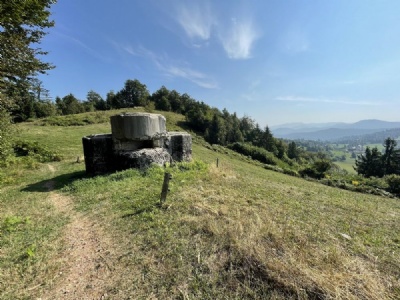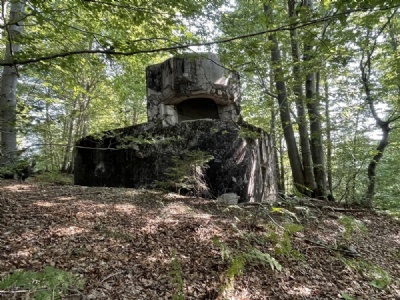Vrhnika - Rupnik Line
In 1920, the kingdoms of Italy and Yugoslavia signed a treaty in the small italian town Rapallo, which regulated the borders between the states, later known as the Rapallo borders. The border stretched from Austria in the north down to the south of Rijeka (italian Fiume). In the early thirties, Italy began to build a defense line (Alpine Wall) along the Rapallo border. In response, Yugoslavia started in 1937 to build its own defence line in the event of an attack from Italy. The line was called the Rupnik line after the Slovenian general Leon Rupnik who was the initiator of the line. The line was very reminiscent of other similar defence lines that had been built in Europe during the interwar period and perhaps mainly during the thirties when the clouds of war began to accumulate.
The Rupnik line was divided into six sectors which were all assigned specific tasks in the event of war and just outside Vrhnika, about thirty kilometres west of Ljubljana, lay sector three. The line consisted of two lines, the first line consisted mostly of machine gun bunkers. The second line, also called the artillery line, consisted of tank barriers and large artillery. A total of about 4,000 bunkers were built until 1941 when Germany invaded Yugoslavia. The German armies were able to quickly force the line because it was poorly equipped and understaffed. It was due to be finished in 1947, therefore it was easily surpassed. During the war, much of it was destroyed by the italians to prevent it from being being used by partisans. After the war, the borders were once again moved and former Italian areas fell to Yugoslavia and the line thus lost its purpose. Most bunkers were abandoned but a few were used for military purposes.
Current status: Partly preserved/demolished with information boards (2024).
Location: 45°57' 12.08" N 14°13' 39.96" E
Get there: Car.
Follow up in books: Kaufmann, J.e.: Fortress Europe: European Fortifications of World War II (2002).






In Slovenia, there is much preserved of the Rupnik line, including museums, but also preserved bunkers along the line, albeit in varying condition. Outside Vrhnika, a three-kilometer long walking trail has been prepared through the forest and past about ten bunkers. The trail is just the right length and also offers a magnificent view out over the Slovenian landscape.